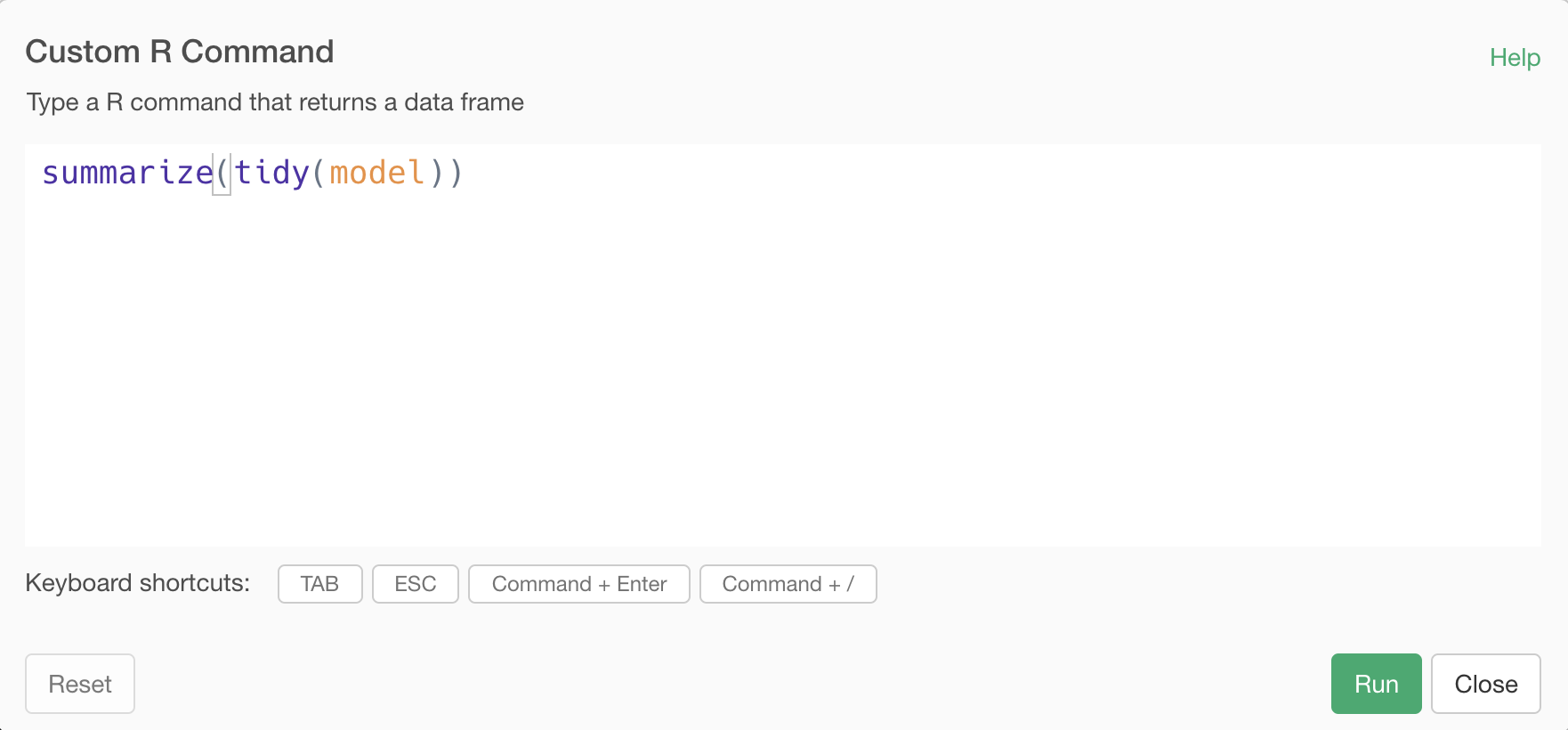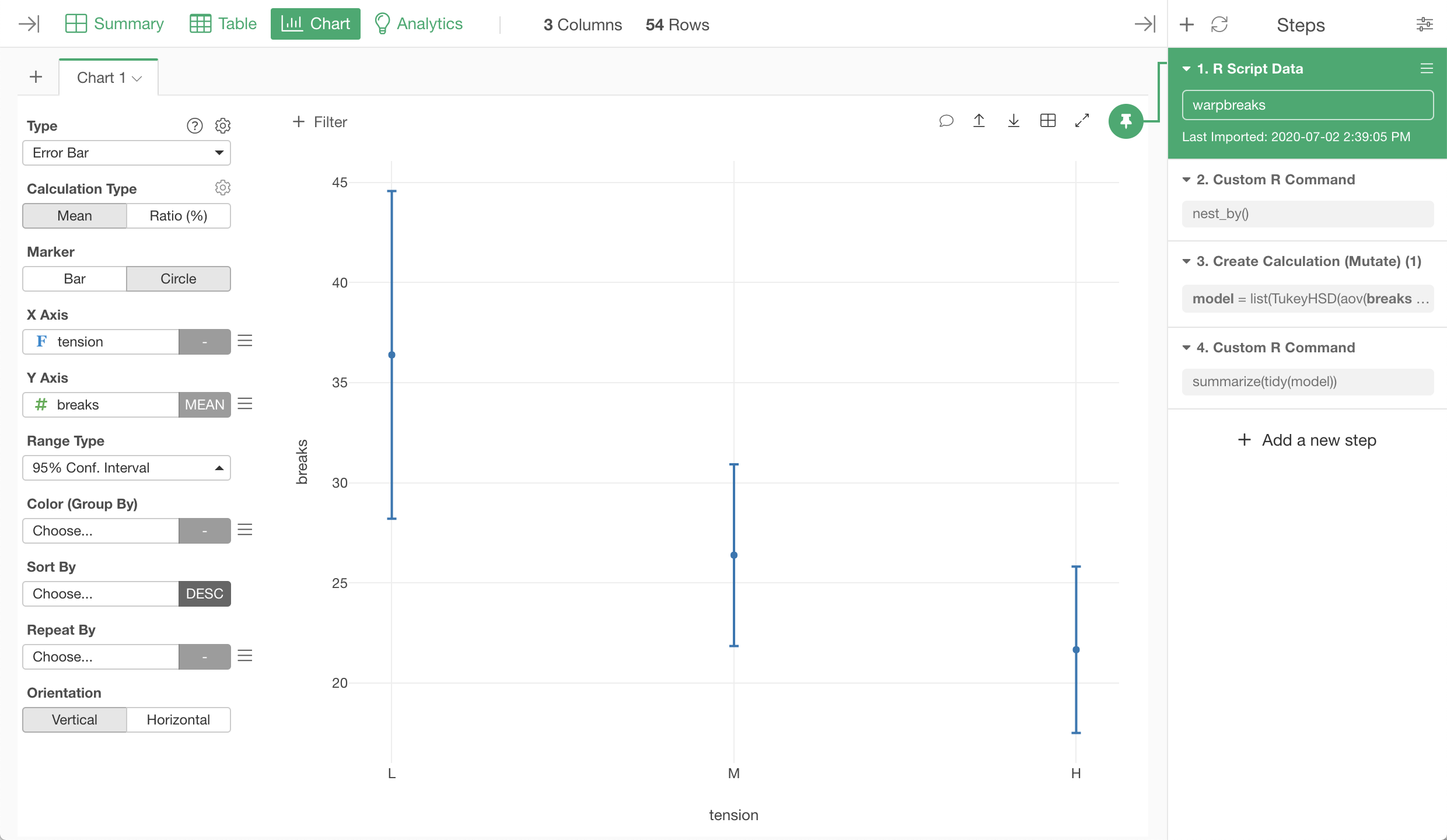How to Run Tukey's HSD Test on Exploratory
Tukey's HSD Test (also known as Tukey's range test) is used to find between which pairs of samples significant differences lie, among 3 or more samples.
As of version 6.0, Exploratory does not have Analytics View for Tukey's HSD test, but we can run it by calling R's TukeyHSD function using Custom R Steps.
I will explain how to to it in this Note.
Data
Let's use R's default warpbreaks data for example. This data has number of broken warps (the lengthwise threads of fabrics) under conditions of different types of wool (A and B) and different strength of tension (High, Middle, Low) during weaving fabrics.

Let's find out if there are significant differences in number of broken warps between pairs of different tensions (e.g. between High and Middle, or between Middle and Low).
The data frame with this data can be created by loading it from R as an R Script Data Frame.

Nest the Data Frame
First, let's transform this data frame into a new data frame that has a column that stores the entire original data frame as its value. This is so that we can pass the entire original data frame to the model building function at the next step.
We do this with dplyr 1.0's new function nest_by.
nest_by()
This creates a data column, which holds the original data frame as its value.

Create Model Object for the Test
Now let's run Tukey's HSD test.
Add a mutate step with the following expression creating a new column named model, by applying Tukey's HSD test on the original data frame stored in the data column.
list(TukeyHSD(aov(breaks ~ tension, data = data), "tension", ordered = TRUE))
This creates a model column.

The model column, as its value, has a model object, which holds the result of the test.
Extract Test Results by broom's tidy command
Using tidy command from broom package, and dplyr 1.0's summarize command, you can extract the test result from the model column as a data frame, like following.
summarize(tidy(model))
This creates a step which has the result as a data frame like following.

In this case, P value (adj.p.value column) is below 0.05 between low tension and other 2 strength of tension (L-M and L-H). This means applying low tension makes difference, but we can't say there are significant differences between midium tension and high tension (H-M).
Looking at the data with error bars, we can see that the result of the test corresponds with how the 95% confidence intervals of number of broken warps for each tension overlap, or do not overlap.

R's TukeyHSD function we used internally runs Tukey-Kramer method, which is an improved version of Tukey's HSD test, so that it can handle samples of different sizes. In this example, the sizes of different tensions were the same, but this function can handle the samples of different sizes the same way.